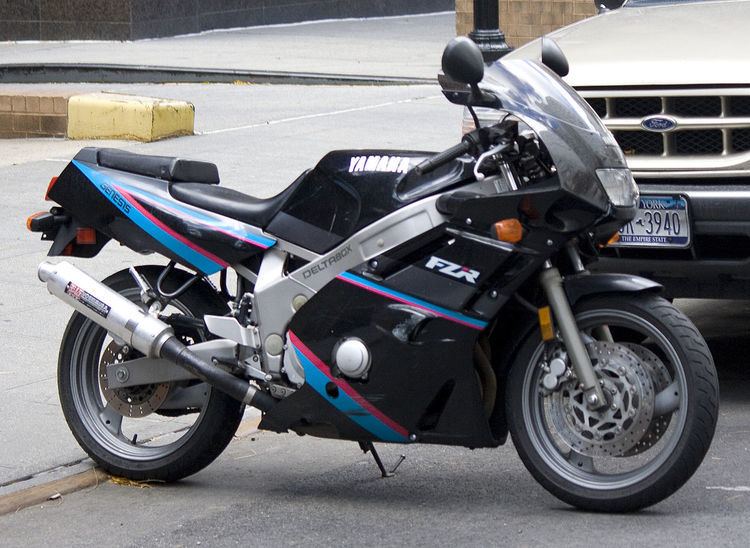Production 1989–1999 Class Sport bike | Also called 3HE Successor YZF-600R | |
 | ||
Engine 599 cc, 4-stroke, liquid cooled, inline 4-cylinder, DOHC, 16 valves | ||
The Yamaha FZR600 is a sports motorcycle produced by Yamaha between 1989 and 1999. It was the successor to the FZ600 and was replaced by the YZF-600R. It had a steel Deltabox frame and swingarm, similar in appearance to the alloy Deltabox frame introduced three years earlier on the 1WG FZR400.
The FZR600 was discontinued in 1999 due to age of the design and the competing 600 cc sportbike offerings from Yamaha: The YZF-600R and YZF-R6.
The four-valve Yamaha FZR600 engine was slanted forward in the frame. This was the basis of the Genesis frame concept, and helped to lower the centre of gravity and help centralise mass. This layout allowed the real fuel tank to sit behind the cylinders, low between the frame rails, and further aided with lowering the centre of gravity. Forward of this sat the airbox, with four 32 mm Mikuni downdraft carburettors, and all these assemblies were covered by a plastic cover dummy petrol tank.
Unlike the larger FZR models, which had featured three intake valves and two exhaust valves per cylinder, the FZR600 had a four-valve-per-cylinder layout, necessitated by the different gas flow characteristics of the 600 cc engine over the 750 and 1,000 cc units in the FZR range. Many models came with the EXUP valve system, mandatory for units sold in California. This system located in the lower exhaust manifold helps maintain high back pressure at low engine speeds, and opens up more at higher engine speeds, giving the motor better mid-range power. The EXUP system was mainly found in US and some European models to compensate for the loss of power caused by emissions related modifications for those markets. Standard world market models produced 91 bhp (68 kW), compared to about 76 bhp (57 kW) for EXUP equipped versions.
The FZR600 continued in production until 1999. However, in some markets it was superseded in 1994 by the closely related FZR600R, which was mechanically similar but featured an all-new steel frame, slightly modified engine producing 98 BHP, and different styling with the now famous "Foxeye" headlamps. In the US, the "Foxeye" FZR600 was released in 1995 as the "Foxeye" YZF600.
The original steel-framed '3HE' FZR600 remained virtually unchanged throughout its production. In 1991 the FZR received a single wedge-shaped headlamp to ape its FZR1000 EXUP sibling, but Yamaha reverted to the twin headlamp design for 1993. In 1990, the rear wheel width was increased to 4 inches (as opposed to the 3.5-inch wheel which was stock for the 1989 model). In the same year the front brake calipers were upgraded to 4-piston units (as opposed to the 2-piston calipers on the 1989 model). In 1991 the FZR received a different swingarm, which was slightly fatter in profile. Aside from the minor mechanical changes, the paintwork and color schemes were the main change for each new model year, including the Vance and Hines special edition scheme that was available for 1992.
